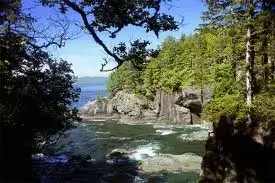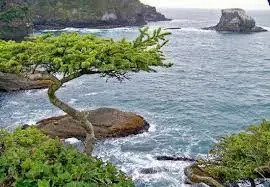HUGGY
I Post Because I Care
There would be thousands of places to off load supplies all in and around Puget Sound even after a "mega" quake....
... My little 35 foot Chris Craft is Coast Guard rated to carry up to twenty passengers.
If you can't see how they would be destroyed, you do not grasp the destructive power of the Side effect to such a Hurricane. Tsunami.
A Tsunami in Puget Sound? Not likely.
... Inland the Straight of Juan De Fuca is fairly narrow so a 30 ft tsunami on the coast would only result in 3-4 ft in Puget sound. The only ones that are not constructed on bedrock are in downtown Seattle. They are built on fill material and probably would not survive a 9 earthquake. All the rest are sitting on rock. Like Orcas in the San Juans where I am from all of the Islands coastlines are solid granite ...
One thing ya gotta remember "geologically" speaking is that our coast is a hell of a lot younger than the East Coast. Where they have a lot of sand and dirt under their feet we have for the most part solid rock. Only in certain places like the Denny regrade in downtown Seattle is there enough depth of unstable soil to liquify. Same thing happened in SF. Only the "man made" areas of fill really went nuts during any of their quakes. Much of SF's buildings built up on the hilly areas didn't have much damage at all.
Hi, All!
Huggy, you've made a lot of assumptions here that aren't entirely accurate.
First, earthquakes travel farther through bedrock than through loose soil. The East Coast is actually more bedrock than here -- that's why even small earthquakes travel so far there.
Washington Coast cliffs are not granite: they are sedimentary build-up of former sea bed. That's why you find so many agates and agatized fossils on our beaches: because as the cliffs erode, they drop new agates out of their sedimentary matrix.
With regard to "tsunami" --
The Cascadia Subduction Zone event will cause the ground to rise and fall by about six feet over and over for more than five minutes as the slippage travels along the 600-mile-long fault. This means that in addition to inflow from a tsunami generated at sea, the waters of the Puget Sound itself will splash back and forth, like a gigantic bowl filled with water being vigorously shaken and sloshing from side to side.
It's going to be a pretty rough ride. So, while I hope that the ferry docks will be intact after the event, there is some question whether the ferries themselves will be anywhere to be seen... Or, for that matter, any boat, including your Chris Craft.
However, if you live on the coast and you have food stored up, a well or other source of water that doesn't need an electric pump, basic sanitation, and wood heat, you'll be in pretty good shape... especially if you can hunt, trap, fish, and know how to forage for other traditional native foods. (Stay away from plants with blue or purple flowers, and any bulbs that don't smell like onions. All fuzzy berries are edible. Don't mess with mushrooms unless you already know them really well. If the flowers look at all like tomato flowers, it is not good to eat!)
I found a couple of great videos on YouTube. The first one is called MegaQuake Could Hit North America - BBC (Full Documentary)
[ame=http://www.youtube.com/watch?v=vEgLjgnv_3c]MegaQuake Could Hit North America - BBC (Full Documentary) - YouTube[/ame]
The second video is a 6-minute clip. The first minute of it is a KOMO news story from last Wednesday night, with a geologist discussing the 6.3 quake that day on the Juan de Fuca plate, and saying that "we'll be watching this carefully for the next few months". The rest of the video is the poster's own discussion of what they've seen on USGS over the past few months, and what it might mean. It's a little boring, but I concur what they've seen and the conclusions they've drawn.
[ame=http://www.youtube.com/watch?v=BVu_Sv5MNw8]6.3 Earthquake Hits Off Vancouver Island - November 7th, 2012 - YouTube[/ame]
Thanks to all for your posts on the thread!
-- Paravani
This is an area I am familiar with. Neah Bay, the far North Western corner of WA state.
Note all the friggin granite.



